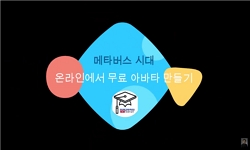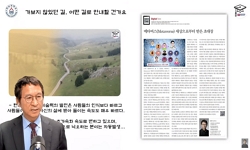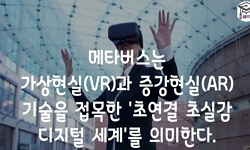The purpose of this study was to examine the effects of teaching methods and avatar anonymity on students’ social presence and copresence in metaverse-based online classes through a design-based research approach. Two studies were conducted to addre...
http://chineseinput.net/에서 pinyin(병음)방식으로 중국어를 변환할 수 있습니다.
변환된 중국어를 복사하여 사용하시면 됩니다.
- 中文 을 입력하시려면 zhongwen을 입력하시고 space를누르시면됩니다.
- 北京 을 입력하시려면 beijing을 입력하시고 space를 누르시면 됩니다.

메타버스 기반 온라인 수업에서 수업 방법과 아바타 익명성이 학습자의 사회적 실재감 및 공존감에 미치는 영향: 설계기반 연구 = The Effects of Teaching Methods and Avatar Anonymity on Students’ Social Presence and Copresence in Metaverse-based Online Classes: Design-Based Research Approach
한글로보기https://www.riss.kr/link?id=A108490128
-
저자
임태형 (전남대학교 교육문제연구소)
- 발행기관
- 학술지명
- 권호사항
-
발행연도
2023
-
작성언어
Korean
-
주제어
Metaverse ; online learning ; spatiality ; avatar ; social presence ; copresence ; 메타버스 ; 온라인 수업 ; 공간성 ; 아바타 ; 사회적 실재감 ; 공존감
-
등재정보
KCI등재
-
자료형태
학술저널
- 발행기관 URL
-
수록면
49-72(24쪽)
- 제공처
-
0
상세조회 -
0
다운로드
부가정보
다국어 초록 (Multilingual Abstract)
The purpose of this study was to examine the effects of teaching methods and avatar anonymity on students’ social presence and copresence in metaverse-based online classes through a design-based research approach. Two studies were conducted to address spatiality and the avatar, which are characteristics of the metaverse compared to video conferencing tools. The purpose of Study 1 was to examine the effects of teaching methods (lecture vs. discussion) on social presence and copresence, and a total of 35 students from two classes (19 lecture vs. 16 discussion) participated in the study. The results showed no significant differences between the groups. The purpose of Study 2 was to examine the effects of avatar anonymity (real name character vs. anonymous character) on social presence and copresence. Eight students participated and the data were analyzed with a non-parametric repeated measures ANOVA. The results showed a significant difference in social presence between the two groups in which the anonymity group showed a higher level of social presence than the real name group. This indicated that the anonymity and virtuality of the character determined the positive results related to student interactions. Implications for design factors to enhance social presence and copresence in the metaverse-based class environment are suggested. In addition, limitations of the study are reported and suggestions for future studies are provided.
국문 초록 (Abstract)
이 연구의 목적은 설계기반 연구 접근법을 통해 메타버스 기반 수업에서 수업 방법과 아바타 익명성이 학습자의 사회적 실재감과 공존감에 미치는 영향을 조사한 것이다. 메타버스가 기존 ...
이 연구의 목적은 설계기반 연구 접근법을 통해 메타버스 기반 수업에서 수업 방법과 아바타 익명성이 학습자의 사회적 실재감과 공존감에 미치는 영향을 조사한 것이다. 메타버스가 기존 화상회의 방식 대비 갖는 특장점인 공간성과 아바타 요인을 고려하여 연구 1과 연구 2를 진행하였다. 연구 1은 공유된 공간성을 고려하여 수업 방법(강의식 vs. 토론식)에 따른 사회적 실재감과 공존감의 변화를 확인하였다. 강의식 19명, 토론식 16명으로 구성된 두 분반의 참여자 35명을 대상으로 두 독립표본 t검정 결과, 수업 방법에 따라서 사회적 실재감과 공존감에 차이가 없었다. 연구 2에서는 아바타 익명성(실명 캐릭터 vs. 익명 캐릭터)에 따른 사회적 실재감과 공존감의 차이를 조사하였다. 단일 분반 8명을 대상으로 비모수 반복측정 분산분석 결과, 익명 캐릭터 조건에서 사회적 실재감이 유의하게 높았다. 이는 익명 캐릭터가 갖는 익명성과 가상성이 학습자 상호작용적으로 긍정적인 결과를 가져오는 것으로 해석할 수 있다. 이에 따라 메타버스 수업환경에서 사회적 실재감과 공존감 증진을 위한 설계요인에 대한 시사점을 제시하였다. 또한 연구의 제한점을 보고하고 후속 연구에 대한 제언이 이루어졌다.
참고문헌 (Reference)
1 김민정, "설계기반 연구를 통한 플립러닝 사전 동영상 자기주도 예습 지원 교수-학습전략 개발" 한국교육정보미디어학회 23 (23): 789-814, 2017
2 이은택 ; 임상훈, "목표 지향 디자인 방법론에 근거한 메타버스 수업설계 전략 개발 연구" 한국교육정보미디어학회 28 (28): 983-1010, 2022
3 정유선 ; 임태형 ; 류지헌, "메타버스를 활용한 대학생 온라인 수업에서 공간이동 수준이 학습실재감과 흥미발달에 미치는 효과" 한국교육정보미디어학회 27 (27): 1167-1188, 2021
4 임태형 ; 양은별 ; 김국현 ; 류지헌, "메타버스를 활용한 고등학생 진로체험 프로그램 사용자 경험 분석" 학습자중심교과교육학회 21 (21): 679-695, 2021
5 주현재 ; 최성경 ; 정은실, "메타버스 활용 교육에서 학습자 중심 교수설계원칙" 한국 리터러시 학회 13 (13): 13-44, 2022
6 양은별 ; 류지헌, "메타버스 학습환경에서 동료와 교사 아바타가 학습실재감과 시각적 주의집중에 미치는 효과" 한국교육정보미디어학회 27 (27): 1629-1653, 2021
7 임태형 ; 류지헌 ; 정유선, "메타버스 학습환경에 사회적 상호작용 여부와 수업유형이 실재감과 흥미발달에 미치는 효과" 안암교육학회 28 (28): 167-189, 2022
8 김연진, "메타버스 플랫폼을 활용한 수업사례 연구 –게더타운(Gather Town)을 중심으로-" 33-39, 2021
9 강민수 ; 김건우 ; 신예은 ; 김대권, "메타버스 플랫폼 게더타운을 활용한 교육대학원 수업에서 학습자의 학습실재감과 몰입감이 학습만족도에 미치는 영향" 교육문제연구소 35 (35): 83-116, 2022
10 엄미리 ; 김효정 ; 노아영 ; 심희수 ; 진서연 ; 현민영 ; 김상희, "메타버스 수업의 설계와 운영을 위한 프레임워크 개발" 교육문제연구소 35 (35): 55-79, 2022
1 김민정, "설계기반 연구를 통한 플립러닝 사전 동영상 자기주도 예습 지원 교수-학습전략 개발" 한국교육정보미디어학회 23 (23): 789-814, 2017
2 이은택 ; 임상훈, "목표 지향 디자인 방법론에 근거한 메타버스 수업설계 전략 개발 연구" 한국교육정보미디어학회 28 (28): 983-1010, 2022
3 정유선 ; 임태형 ; 류지헌, "메타버스를 활용한 대학생 온라인 수업에서 공간이동 수준이 학습실재감과 흥미발달에 미치는 효과" 한국교육정보미디어학회 27 (27): 1167-1188, 2021
4 임태형 ; 양은별 ; 김국현 ; 류지헌, "메타버스를 활용한 고등학생 진로체험 프로그램 사용자 경험 분석" 학습자중심교과교육학회 21 (21): 679-695, 2021
5 주현재 ; 최성경 ; 정은실, "메타버스 활용 교육에서 학습자 중심 교수설계원칙" 한국 리터러시 학회 13 (13): 13-44, 2022
6 양은별 ; 류지헌, "메타버스 학습환경에서 동료와 교사 아바타가 학습실재감과 시각적 주의집중에 미치는 효과" 한국교육정보미디어학회 27 (27): 1629-1653, 2021
7 임태형 ; 류지헌 ; 정유선, "메타버스 학습환경에 사회적 상호작용 여부와 수업유형이 실재감과 흥미발달에 미치는 효과" 안암교육학회 28 (28): 167-189, 2022
8 김연진, "메타버스 플랫폼을 활용한 수업사례 연구 –게더타운(Gather Town)을 중심으로-" 33-39, 2021
9 강민수 ; 김건우 ; 신예은 ; 김대권, "메타버스 플랫폼 게더타운을 활용한 교육대학원 수업에서 학습자의 학습실재감과 몰입감이 학습만족도에 미치는 영향" 교육문제연구소 35 (35): 83-116, 2022
10 엄미리 ; 김효정 ; 노아영 ; 심희수 ; 진서연 ; 현민영 ; 김상희, "메타버스 수업의 설계와 운영을 위한 프레임워크 개발" 교육문제연구소 35 (35): 55-79, 2022
11 정고은 ; 김혜련, "게더타운(Gather Town)을 활용한 영어 학습에서의 상호작용에 관한 초등학생의 인식 조사" 교육연구소 28 (28): 345-368, 2022
12 Nevelsteen, K. J., "Virtual world, defined from a technological perspective and applied to video games, mixed reality, and the Metaverse" 29 (29): e1752-, 2018
13 Tyler Blackman, "Virtual reality and videogames: immersion, presence, and the performative spatiality of ‘being there’ in virtual worlds" Informa UK Limited 1-19, 2022
14 Dunlap, J. C., "Tweeting the night away : Using Twitter to enhance social presence" 20 (20): 129-135, 2009
15 Biocca, F., "Toward a more robust theory and measure of social presence : Review and suggested criteria" 12 (12): 456-480, 2003
16 Castronova, E., "Theory of the Avatar"
17 Short, J., "The social psychology of telecommunications" John Wiley and Sons Ltd 1976
18 Tu, C. -H., "The relationship of social presence and interaction in online classes" 16 (16): 131-150, 2002
19 Christopherson, K. M., "The positive and negative implications of anonymity in internet social interactions : "On the internet, nobody knows you’re a dog"" 23 : 3038-3056, 2007
20 Kang, S. H., "The impact of avatar realism and anonymity on effective communication via mobile devices" 29 (29): 1169-1181, 2013
21 Wise, A., "The effects of teacher social presence on student satisfaction, engagement, and learning" 31 (31): 247-271, 2004
22 Damer, B., "The Oxford Handbook of Virtuality" 17-41, 2014
23 Chen, J. C., "Task engagement, learner motivation and avatar identities of struggling English language learners in the 3D virtual world" 88 : 102168-, 2020
24 Lowenthal, P. R., "Social presence, identity, and online learning : Research development and needs" 38 (38): 137-140, 2017
25 Gunawardena, C. N., "Social presence as a predictor of satisfaction within a computer-mediated conferencing environment" 11 (11): 8-26, 1997
26 Tu, C. -H., "On-line learning migration : from social learning theory to social presence theory in a CMC environment" 23 (23): 27-37, 2000
27 Swan, K., "On the nature and development of social presence in online course discussions" 9 (9): 115-136, 2005
28 Paul R Messinger, "On the Relationship between My Avatar and Myself" Virtual Worlds Institute, Inc. 1 (1): 1970
29 Jin, S. A. A., "Modality effects in second life : The mediating role of social presence and the moderating role of product involvement" 12 (12): 717-721, 2009
30 Muhammad Zahid Iqbal, "Metaverse as Tech for Good: Current Progress and Emerging Opportunities" Elsevier BV 2022
31 Kim, J., "Investigating factors that influence social presence and learning outcomes in distance higher education" 57 (57): 1512-1520, 2011
32 Lowenthal, P. R., "In search of a better understanding of social presence : an investigation into how researchers define social presence" 38 (38): 141-159, 2017
33 Tu, C. -H., "How chinese perceive social presence : An examination of interaction in online learning environment" 38 (38): 45-60, 2001
34 Kim, K., "Does the Real Face Provision Improve the Attention and Social Presence in Metaverse as Learning Environments?" Association for the Advancement of Computing in Education (AACE) 1760-1765, 2022
35 Weidlich, J., "Designing sociable online learning environments and enhancing social presence : An affordance enrichment approach" 142 : 103622-, 2019
36 Galanxhi, H., "Deception in cyberspace : A comparison of text-only vs. avatar-supported medium" 65 (65): 770-783, 2007
37 Sala, N., "Current and prospective applications of virtual reality in higher education" IGI Global 2021
38 Garrison, D. R., "Critical inquiry in a text-based environment : Computer conferencing in higher education" 2 (2): 87-105, 1999
39 Kim, K., "Blowing in the wind : Increasing social presence with a virtual human via environmental airflow interaction in mixed reality" 83 : 23-32, 2019
40 Picciano, A. G., "Beyond student perceptions : Issues of interaction, presence, and performance in an online course" 6 (6): 21-40, 2002
41 Kim, S. H., "Between purpose and method : A review of educational research on 3D virtual worlds" 5 (5): 1-18, 2012
42 Goffman, E., "Behavior in public places: Notes on the social organization of gatherings" The Free Press 1963
43 Rourke, L., "Assessing social presence in asynchronous text-based computer conferencing" 14 (14): 50-71, 2007
44 Dionisio, J. D. N., "3D virtual worlds and the metaverse : Current status and future possibilities" 45 (45): 1-38, 2013
동일학술지(권/호) 다른 논문
-
학생의 영어 자기 효능감이 인지적 학습 정도와 학습 성과에 미치는 영향: 교사 리더십의 조절 효과와 학습 동기부여의 매개 영향
- 한국교육방법학회
- 최광훈
- 2023
- KCI등재
-
- 한국교육방법학회
- 윤옥한
- 2023
- KCI등재
-
고교학점제에 따른 학생 선택형 교육과정 편성・운영 실태 분석 및 개선 방안: 지역 및 학교 간 격차 해소를 중심으로
- 한국교육방법학회
- 임유나
- 2023
- KCI등재
-
중고등학생의 사회적 가치교육 내용 및 방법 인식에 대한 성별, 급간별 차이 연구: IPA 중요도-수행도 분석을 중심으로
- 한국교육방법학회
- 이은배
- 2023
- KCI등재




 KCI
KCI 스콜라
스콜라






